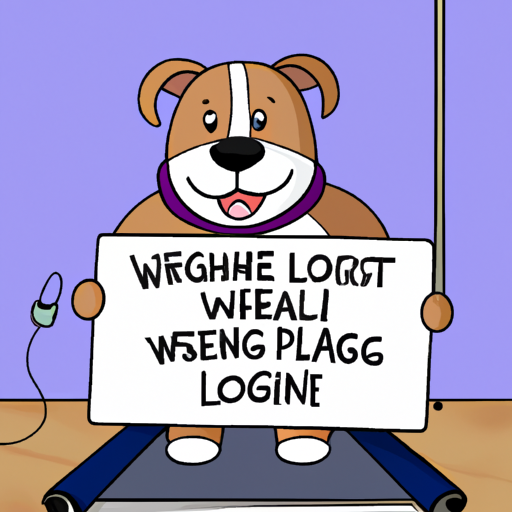Obesity in dogs is a common issue that can lead to serious health problems, such as diabetes, heart disease, and arthritis. If you’re a caregiver for a beloved furry friend who’s packing on the pounds, don’t fret. I’m here to guide you through the process of helping your dog shed that excess weight, and bring them back to their healthy, lively self.
Understanding Canine Obesity
Just like in humans, obesity in dogs happens when they take in more calories than they burn. It’s important to understand that each breed has its own ideal weight range. For instance, a Labrador Retriever will have a different ideal weight than a Chihuahua.
- Consult your veterinarian: They can help you determine if your dog is overweight and what their ideal weight should be.
- Body Condition Score (BCS): Vets generally use the BCS to classify a dog’s body weight. The score ranges from 1 (emaciated) to 9 (obese). A score of 4 or 5 is generally considered healthy.
Reassessing Your Dog’s Diet
Once you have determined that your dog needs to lose weight, the first step is to evaluate their current diet.
- Calorie Count: Find out how many calories your dog is currently consuming, including meals and treats.
- Quality of Food: Not all dog foods are created equal. Some are high in fillers and low in nutrition, leading to weight gain.
- Portion Control: Measure the amount of food you’re giving your dog to avoid overfeeding.
After evaluating your dog’s current diet, work with your vet to create a healthier meal plan.
Incorporating Exercise
Exercise is crucial for weight loss in dogs. It burns calories, builds muscle, and enriches their life.
- Daily Walks: Start with a leisurely walk and gradually increase the pace and distance.
- Playtime: Activities like fetch, tug-of-war, or agility courses can provide great exercise.
- Swimming: If your dog likes water, swimming is a fantastic low-impact exercise option.
Remember, it’s always best to consult with your vet before starting any new exercise regime.
Regular Weight Checks
Regular weight checks are important to track your dog’s weight loss progress. Most vets recommend weighing your dog at least once a month.
| Checkpoint | Expected Weight Loss |
|---|---|
| Month 1 | 1-2% of body weight |
| Month 2 | 3-5% of body weight |
| Month 3 | 5-7% of body weight |
Remember, slow and steady weight loss is healthier and safer for your dog.
Positive Reinforcement
When your dog makes progress, celebrate their success with positive reinforcement. However, keep in mind that rewards should not contribute to weight gain.
- Use low-calorie or homemade treats.
- Praise and petting can also serve as a reward.
- Playtime is an excellent way of rewarding your dog without adding calories.
Dealing with Setbacks
Weight loss is a journey, and there may be setbacks. If your dog isn’t losing weight despite your efforts, it’s important to reevaluate and adjust your plan.
- Consult your vet: They can help determine if there’s a medical reason for the lack of weight loss.
- Reassess the diet: It might need further tweaking.
- Evaluate exercise routine: Perhaps it needs to be more rigorous.
Maintaining a Healthy Weight
Once your dog has reached their ideal weight, the goal is to maintain it. Continue with the healthy diet and exercise routine, and conduct regular weight checks to ensure your dog is staying within their ideal weight range.
FAQ
Q: What are some common signs my dog might be overweight?
A: Some common signs include difficulty in feeling your dog’s ribs, loss of an obvious waist, and fat deposits on the back and base of the tail.
Q: Are certain breeds more prone to obesity?
A: Yes, breeds like Labradors, Pugs, and Dachshunds are more prone to weight gain.
Q: Can I use human weight loss techniques for my dog?
A: No, human weight loss techniques might not be suitable or safe for dogs. Always consult a vet.
Q: How can I calculate my dog’s calorie needs?
A: Your vet can provide the best advice. As a general rule, dogs need 20 calories per pound of body weight to maintain their current weight.
Remember, helping your dog lose weight is a process. Be patient, stay consistent, and soon you’ll see your beloved pet bounding around with renewed energy and vitality!



